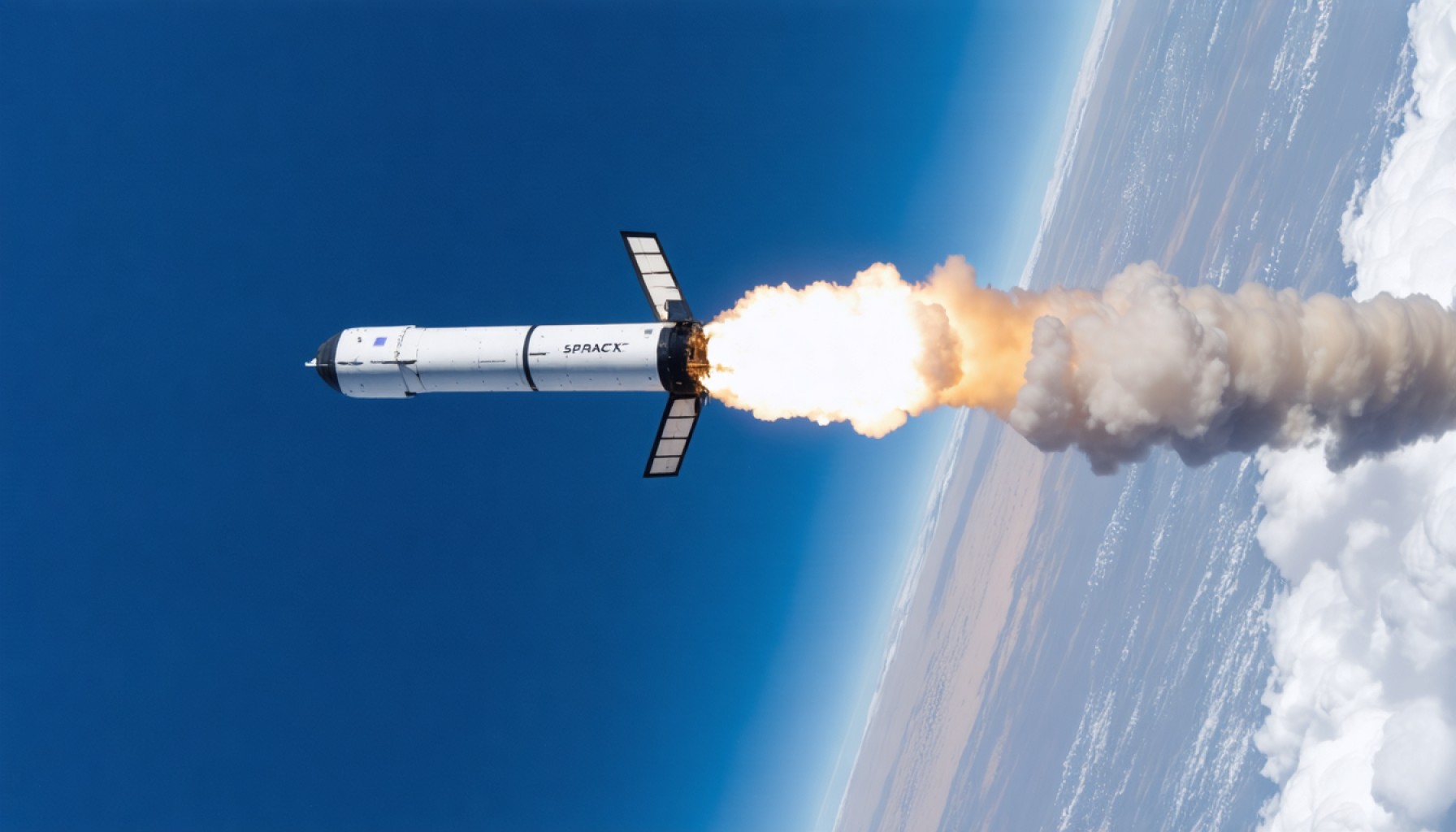- The Fram2 mission represents SpaceX’s latest advancement in space exploration, pushing the boundaries of innovation and sustainability.
- Utilizing the partially reusable Falcon 9 rocket, SpaceX aims to reduce costs and make space travel more sustainable and frequent.
- Mission Commander Chun Wang, Vehicle Commander Jannicke Mikkelsen, Vehicle Pilot Rabea Rogge, and Mission Specialist Eric Philips form a skilled team driving this endeavor.
- The mission is more than just a journey to a polar orbit; it embodies humanity’s relentless curiosity and determination to explore the cosmos.
- The launch highlights the potential for human advancement through cooperation and cutting-edge technology, inspiring future generations.
The horizon trembles at the edge of innovation as SpaceX prepares another leap into the cosmos. Fram2, a groundbreaking mission set to launch this Monday evening, promises to etch new stories into the pages of space exploration history. The anticipation crackles through the air as Falcon 9’s engines await the fiery roar that will propel them past the boundaries of Earth.
In a defining moment for humankind’s quest to explore uncharted territories, SpaceX once again harnesses the power of reusability. The Falcon 9, a marvel of modern aerospace engineering, showcases humanity’s ability to dream beyond limitations. Its partially reusable design not only reduces costs but also propels the dream of sustainable space travel into undeniable reality.
Captaining this odyssey is an extraordinary crew poised to sculpt their place among the stars. Mission Commander Chun Wang leads with steely determination, his expertise unwavering as the final frontier beckons. By his side, Jannicke Mikkelsen, the Vehicle Commander, navigates the voyage with visionary precision, eyes fixed on the polar orbit that awaits their arrival.
Vehicle Pilot Rabea Rogge stands ready to guide the Dragon spacecraft on its path, each maneuver a testament to the rigorous training that transforms terrestrial beings into celestial explorers. Completing this cadre is Mission Specialist and Medical Officer Eric Philips, whose dual role bridges the realms of science and shipboard health, ensuring the crew’s safety under the vast veil of space.
As the countdown to ignition ticks closer, humanity holds its collective breath. The launch represents more than just a journey to a polar orbit; it’s a leap towards understanding our universe and our place within it. It’s a vivid reminder of humankind’s indomitable spirit and relentless curiosity—a pursuit that echoes across time and brings us together under the expansive canopy of the cosmos.
Key Takeaway: The Fram2 mission by SpaceX symbolizes a fusion of cutting-edge technology and human ambition, showcasing reusability in orbital launches as a pathway to more sustainable and frequent space exploration. This launch underscores the collaborative efforts of a dedicated crew determined to break barriers and inspire future generations. As we stand on the precipice of what’s possible, our gaze turns upward, longing to touch the stars.
SpaceX’s Fram2: A New Era in Space Exploration Begins
Introduction
SpaceX is on the cusp of another historic leap with the upcoming Fram2 mission, poised to make significant strides in space exploration. As anticipation builds, let’s delve deeper into the mission’s intricacies, uncovering the implications, innovations, and future potentials that it heralds.
Features and Innovations of the Fram2 Mission
1. Falcon 9 Design & Reusability:
– SpaceX’s Falcon 9 rocket is at the forefront of aerospace innovation due to its partially reusable design. By enabling rockets to be used multiple times, operational costs are significantly reduced, paving the way for more frequent launches and increased payload capacity (SpaceX).
2. Crew Expertise & Role Dynamics:
– The mission’s crew includes seasoned space professionals. Mission Commander Chun Wang brings extensive experience, ensuring mission success. The team dynamic, including Vehicle Commander Jannicke Mikkelsen and Pilot Rabea Rogge, enhances their ability to tackle unforeseen challenges. Medical Officer Eric Philips offers invaluable dual skills in science and crew health management.
How-To Steps & Life Hacks: Setting Up for Space Exploration
– Step 1: Rigorous Training – Space mission crew undergo extensive training, simulating numerous scenarios to prepare for the unpredictability of space.
– Step 2: Tech Acclimatization – Understanding and mastering the spacecraft’s controls and systems (like those on Falcon 9 and Dragon), is crucial.
– Step 3: Health and Safety Protocols – Adhering to medical guidelines ensures physical and mental well-being in space.
Real-World Use Cases
– Satellite Deployment: The Fram2 mission will primarily deliver satellites into a polar orbit, a critical pathway for Earth observation and global communication networks.
– Scientific Research: Data collected can enhance our understanding of space weather and its impact on Earth.
Market Forecasts & Industry Trends
– The successful reuse of Falcon 9 continues to bolster SpaceX’s market position, potentially shifting industry trends towards sustainable and cost-effective space travel. The global commercial space launch market is projected to grow significantly, preferring companies that emphasize reusability.
Pros & Cons Overview
– Pros:
– Reduced launch costs and increased mission frequency contribute to faster technological advancement.
– Reusable rockets help minimize space debris, contributing to sustainability.
– Cons:
– Technical failures, although rare, pose a threat to both crew safety and mission success.
– The cost of maintaining and refurbishing reusable rockets, while lower than building from scratch, still requires substantial investment.
Actionable Recommendations
– Aspiring space professionals should focus on multidisciplinary education, gaining expertise in engineering, astrophysics, and health sciences to be valuable crew members on future missions.
– Organizations looking to enter the space industry should invest in research and development focused on reusability and sustainable technologies.
Conclusion
SpaceX’s Fram2 mission represents a fusion of visionary ambition and technological prowess. As reusability becomes a pillar of modern space exploration, the industry moves closer to a future where space travel may become as routine as air travel. This mission underscores the importance of collaboration, innovation, and relentless curiosity in propelling humanity towards the stars. Keep an eye on SpaceX’s official website for live updates and further developments.
